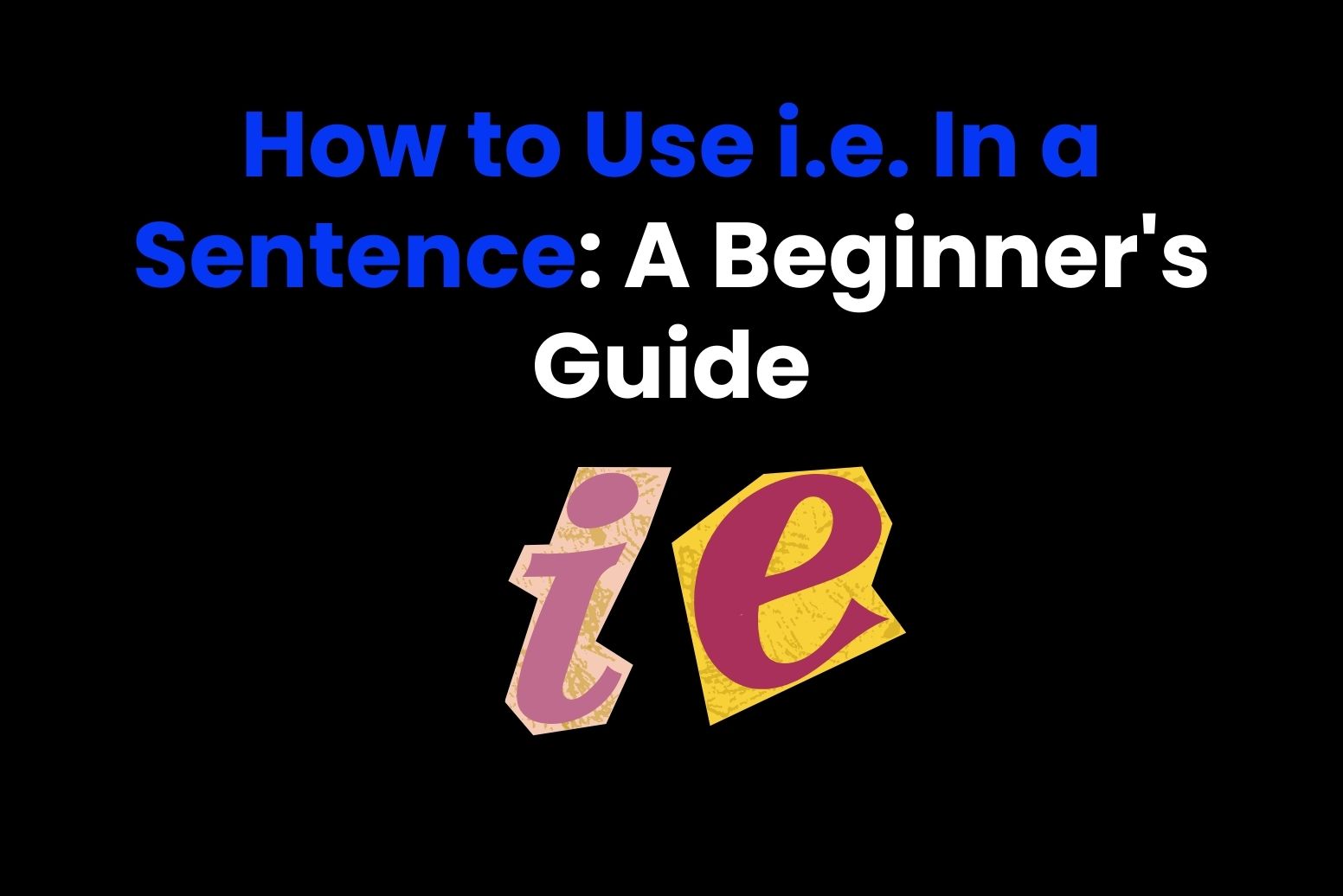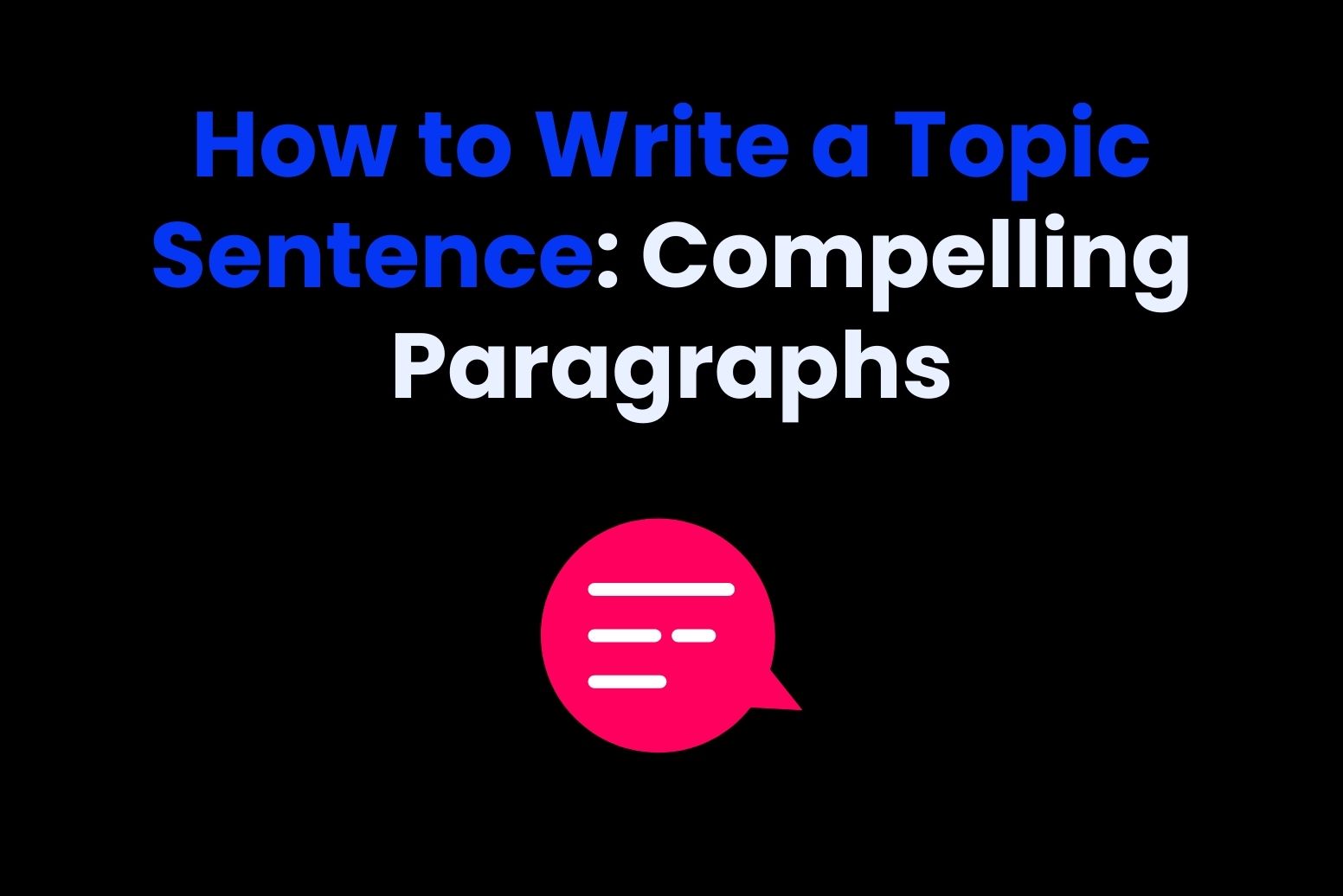The English language is full of details that at times leave even the most seasoned writers guessing. Many misunderstandings likely come from abbreviations like “i.e.”. For example, a common case is that you ask yourself how to use i.e. in a sentence. And you’re not alone.
Then, this guide will be your true savior. Also, it will make you an expert in the incorporation of “i.e.” in writing. For example, in writing emails, presentations, or making an academic essay. By getting the right use of such an abbreviation can really give you a cut above when it comes to communicating in style. But also, in writing in a better way.
So, are you ready to learn how to use “i.e.” like a pro? Let’s begin!
What does i.e. stands for?
You can use this abbreviation in formal and informal writings; however, many people remain in the dark of its meaning or how to use it.
But “i.e.” is, originally, a Latin phrase id est, which means “that is” or “in other words.”
Also, you can use it when:
- Explaining
- Rephrasing
- Giving a clearer definition of something in a sentence
For instance, you would say:
“I love visiting scenic places, i.e., national parks,” where “i.e.” introduces a specific category that helps further explain what you mean by “scenic places.”
The phrase “i.e.” is useful for narrowing ideas and giving explanations to make things clearer and avoid misunderstandings.
For instance, in the sentence “The project must up by a specific date, i.e., by the end of next month,” “i.e.” clarifies the exact date.
Are “i.e.” and “e.g.” one and the same thing?
Now, remember that the other essential is knowing “i.e.” and “e.g.” don’t have a similar meaning. Also, a Latin abbreviation, in this case, “exempli gratia”, or in English-for example.
Although both serve the same purpose of adding information, you use ‘i.e.’ to clarify, define, or explain something specifically. Meanwhile, you use ‘e.g.’ to introduce a list of examples.”
For instance, “I like all kinds of music, e.g., jazz, classical, and rock” is giving examples. But, in a different note: “I like classical music, i.e., from the 17th and early 19th centuries” is offering precision.
When to use i.e. in a sentence?
It’s clear that “i.e.” is a great literary resource. But, as always, it’s important to use it right to communicate clearly.
Here’s a quick guide to using “i.e.” at the right time and placing it in your sentences:
1. To explain, or to paraphrase a given point
First, you use “i.e.” when you want to explain something or to broaden it. Example: Instead of saying, “I like outdoor activities i.e., hiking and camping”, you are placing a limitation on the activities you are considering are “outdoor activities”.
Hence, what follows after “i.e.” should be literally repeating or refining what you have just written.
2. To provide specific examples
While “e.g.” works for showing some examples, the thing is that “i.e.” is more specific. Since it explains just what you mean.
For example, saying, “She has a food allergy, i.e., she can’t eat dairy” tells the reader just what you’re referring to. In this case, you’re giving an exact definition or explanation.
3. After a general statement
When you make a general statement, “i.e.” helps specify it. For example, “He works in the technology field, i.e., he is a software developer,” where “i.e.” clarifies the original statement.
How to use i.e. in a sentence correctly
When you want to explain something in more detail, “i.e.” is a super useful way to. It works when you mean “that is” or “in other words,” giving a clearer explanation.
Also, it’s important to learn the correct placement of “i.e.” to avoid mixing up the reader:
Clarifying a concept
The most common way of how to use i.e. in a sentence is to explain in more detail, or more clearly, what one has just said. It’s used to explain general ideas in more detail. Example:
- She has a lot of knowledge in ancient history, i.e., the study of civilizations like Rome and Egypt.
Here, “i.e.” narrows down the general concept of “ancient history” to concrete examples, thus being more accurate for the reader.
Providing specific definitions
“I.e.” works wonderfully when one needs to restate something in a more accurate way. It’s often used to provide a clear definition or to provide a direct substitute for something that was termed earlier in the sentence.
- The conference deals with renewable energy, i.e., sustainable power sources like the wind and solar energy.
In this case, “i.e.” defines “renewable energy” by naming the sources specifically.
Avoiding confusion
“I.e.” can avoid the ambiguity found in your writing. Assuming that a certain term had more than one meaning, using “i.e.” will make super clear what you mean to your target readers.
- He has taken eco-friendly projects, which means projects that involves reduction in carbon emissions.
Here, “i.e.” leaves out all doubt about what “eco-friendly projects” is, by making clear its definition.
Key rules for how to use i.e. in a sentence properly:
To correctly use “i.e.”, here are a few key tips:
- Always use “i.e.” if you wish to give an exact explanation or make a new statement.
- After “i.e.,” there should be a comma to ensure a good readability and 0 confusions.
- Do not mix up “i.e.” with “e.g.,”. Since the second introduces examples rather than an explanation.
How to use i.e. in a sentence without mistakes
One of the best ways to put clarity and detail into the written material is the use of “i.e.”.
On the negative side, many writers fall into some common traps that confuse readers or blurs the clarity of the text. Therefore, in this section, we see some common mistakes and their fixes that one should not make while using “i.e.” to avoid making them.
1. Confusing “i.e.” with “e.g.”
The most common errors are those related confusion between these two abbreviations. While these two appear to mean something similar, the way they play in a sentence is quite different.
- “i.e.” gives a precise explanation or rewording of what was just said.
- “e.g.” means examples, not an exhaustive list.
For example:
- Incorrectly: “He enjoys outdoor things, i.e., bike riding, swimming, swimming.”
- Correct: “He loves outdoor sports, such as hiking, cycling, and swimming.”
In the wrong one, “i.e.” means these are all of the outdoors he enjoys. Replacing it with “e.g.” means it is only some of examples of.
2. Omitting the necessary commas
Another common mistake is not using your commas with “i.e.”. Even if not putting them might be fine in casual writing, in formal texts is not. That’s because when you use them, your sentences are clear to read:
- Incorrect: “She brought several things, i.e., a camera, a notebook, and a pen.”
- Correct: “She brought several things along, i.e., a camera, a notebook, and a pen.”
Also, by using commas you separate the explanation from the rest of the sentence. Which makes it easier to read.
3. Overuse of “i.e.”
In itself, the abbreviation “i.e.” is useful; however, using them a lot makes all your writing sound repetitive and super stiff. Rather, come up with other ways to introduce your clarifications and restatements.
For example:
Instead of writing: “Our services include writing, i.e., content writing, editing, and proofreading.”
You could rephrase it as: “Our services include content writing, editing, and proofreading.”
This variation keeps the writing more natural and engaging while avoiding redundancy.
4. Using “i.e.” out of place in the sentence
“I.e.” should always follow some sort of statement or idea that needs further clarity; it’s common to see an “i.e.” used far too early in the sentence and create confusion, or just bring awkward phrasing along. Here is how it is correctly done:
- Incorrect: “i.e., she loves to go hiking and biking.”
- Correct: “She enjoys outdoor activities, i.e., hiking and cycling.”
In the incorrect version, “i.e.” is used before the right one, making the sentence feel lacking. Although in the correct version, the clarification comes after the full idea, which keeps the flow going strong.
5. The use of “i.e.” without context
For “i.e.” to work, it needs that there be a context that has been set up. That is, there requires being a statement you are explaining or just making clear. If there was nothing to clarify, the element “i.e.” puts the reader in limbo as to what this exactly refers to.
- Incorrect: “She likes many kinds of fruits, i.e., apples.”
- Correct: “She likes different fruits, i.e., apples, oranges, and bananas.”
The incorrect example does not set up, so it is not clear what the explanation is meant to explain. The corrected version clearly sets up, then follows with specific detail.
6. Using “i.e.” in informal writing
Although “i.e.” is used without a problem in formal texts, it does not press into casual or conversational contexts. In casual settings, it’s fine to reword for a more natural and friendly tone.
For instance:
- Instead of: “I love outdoors, that is, hiking and biking.”
- You could write: “I love outdoor activities like hiking and biking.”
This keeps the tone conversational and not so formal.
7. Not saying what “i.e.” is referring to
“I.e.” should explain or bring clarity and/or specificity to something that has already been mentioned.
If you use it, make sure the earlier sentence clearly shows what you’re explaining. If not, a reader will quickly become confused as to what, exactly you’re referring to.
- Instead of “The meeting was productive, i.e., we made some important decisions.”
- Correct: “The meeting was productive, i.e., we decided on the project’s next steps.”
The wrong example doesn’t show what’s being explained. The correct one makes it clear.
Mastering how to use i.e. in a sentence: How Arvin AI can simplify your writing?
In conclusion, knowing how to use “i.e.” correctly is key to clear and precise writing. By getting when to use this abbreviation to clarify or explain ideas, you can enhance the quality of your content.
Arvin AI takes your writing to the next level by offering text generation, proofreading, and translation features, all integrated into an easy-to-use Chrome extension.
Whether you’re drafting content, refining your grammar, or translating texts, Arvin AI makes the process way simpler, making it easier to create professional-quality work in no time.
FAQs – How to use i.e. in a sentence?
Is “i.e.” formal?
“I.e.” is a formal way of making things clear, as just using “that is” or “in other words.” In fact, is very common in academic, technical, or professional writing. Especially, when clarity is key.
Although in normal talking or casual writing, it can sound too formal; thus, one can usually rephrase the sentence without the use of “i.e.”.
Are there other ways of making meaning clear in a sentence without the use of “i.e.”?
Yes, you can totally do this. For instance, you can say “that is to say” or “which means”.
That’s because, these can be not-as-formal alternatives for when you want to clearly explain something without using the Latin abbreviation.
How do you say “i.e.”?
“I.e.” is two letters that are in fact: “I” (the pronunciation of this letter is the same as one would say the word “eye”) and “E” like it would be with the pronunciation of “ee`).
You’d write it as “eye-ee” phonetically.
How to use i.e. in a sentence at the beginning?
Generally, one does not begin a sentence with “i.e.” since you can use it to clarify something from a statement. If you begin a sentence with it, it should still make sense and flow in a logical manner.
- Example (awkward): “i.e., we have decided to move forward with the project.”
- Example (improved): “We move forward with the project; the following steps outline what comes next.”






